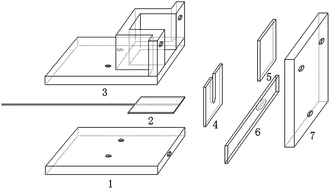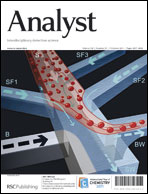Development and application of an electrochemiluminescent flow-injection cell based on CdTe quantum dots modified electrode for high sensitive determination of dopamine
Abstract
A nano-liter sized flow-cell is developed for constructing a flow injection analysis (FIA) system with electrochemiluminescent (


 Please wait while we load your content...
Please wait while we load your content...